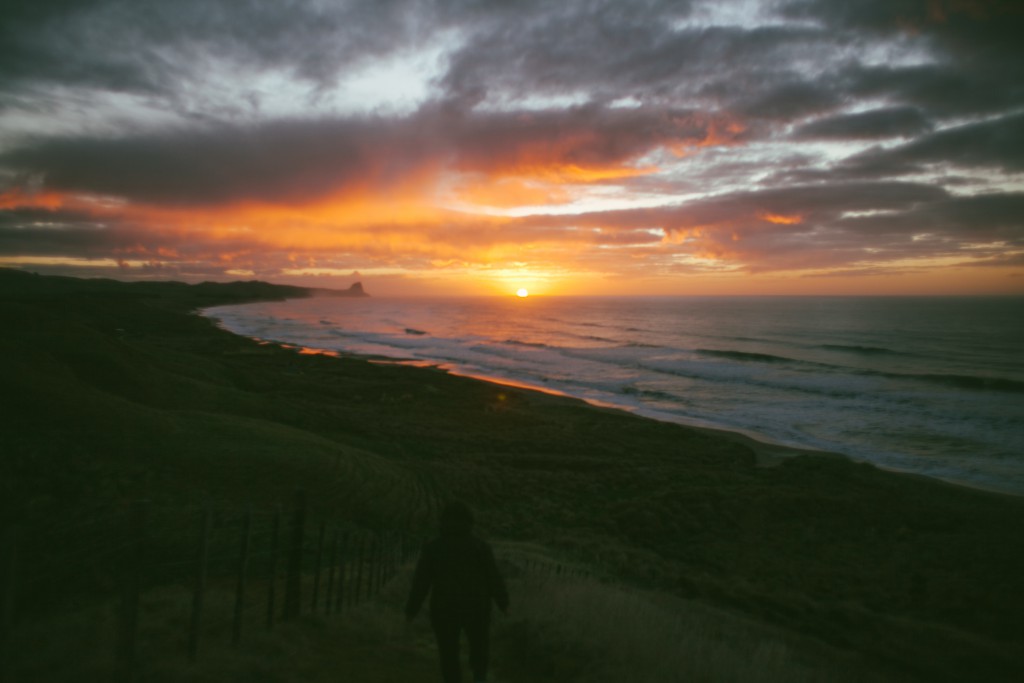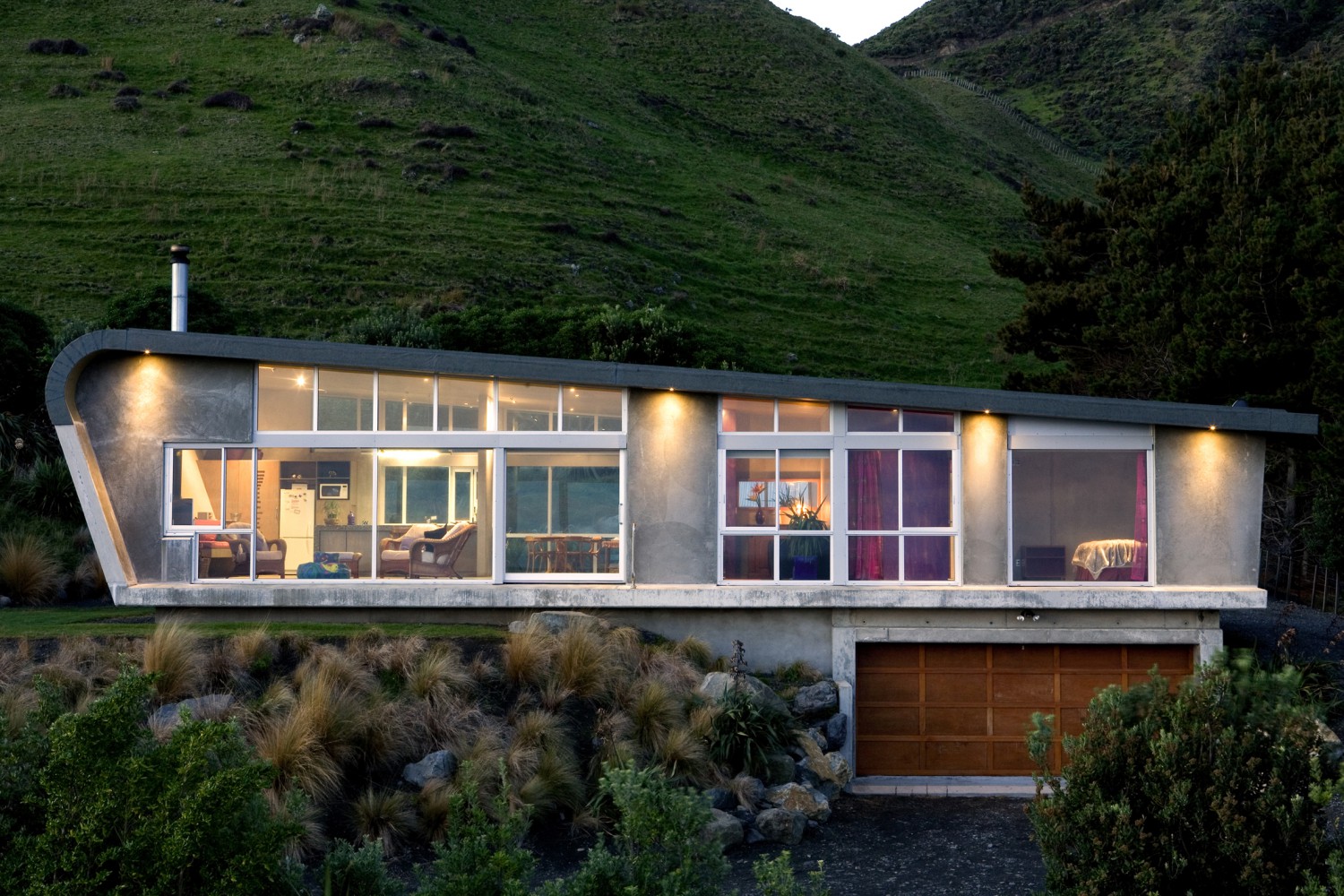It’s 1995, my family is new to the country and we have been invited to a bach in the Marlborough Sounds. There is a private jetty, a steep dirt track to the house, and muddy shoes lolling outside the front door. The water is a flat emerald. There is most definitely no TV. I am an awkward pre-teen, struggling with English. The word ‘bach’ is totally foreign in both sound and meaning.
The owner’s daughter, Helen, is my age, with long caramel-coloured hair, and freckles. She is confident and intimidating. Her older brother, Angus, pretends I do not exist and I return the favour. In the afternoons, we go out in a dinghy. I am taught how to tie a sinker and a bit of mussel to the end of a fishing line and dangle it into the water. In the evenings, the adults stay in the house while we kids play cards in a tent pitched on the front yard.
Baches — New Zealand holiday homes or beach houses — are often characterised by what they are made of, usually cheap and readily available building materials. Kevyn Male recalls in his book, Old Kiwi Baches and a Few Cribs Too, that his father was the master builder of their family bach. It was made of fibrolite, corrugated iron and second-hand windows and doors. There were car seats on the front porch on which to sit. Bits of driftwood were hung around the place for decoration.
Beyond the actual structure of the building, however, baches inspire nostalgia. I have no memory of what the Marlborough Sounds bach looked like, let alone what it was made of. I cannot even remember where I slept. All I remember is watching Helen and Angus together, sure-footed in the surrounding bush, wheeling through the trees and ferns, not needing to look where they were going. They tied their fishing knots without having to be taught and they knew which bits of wood would be good for the burner.
Through these daily rituals, Helen and Angus demonstrated an innate connection with their surroundings that left me in awe. Their actions were the product of many childhood summers spent at that bach. It was in their blood, imprinted onto the subconscious, and coded into muscle memory. More than 20 years later, as I travel and stay in cosy baches along the Wairarapa coast and on Lake Tarawera, I am chasing a connection with land and roots, with sky and sea. I am chasing what that Marlborough Sounds bach triggered so long ago, a deep yearning to travel but also to belong.
I am visiting Otahome, Tora, and Cape Palliser: three tiny towns in the Wairarapa, all about 2 or 3 hours’ drive from Wellington city. This coast contains pockets of some of the oldest inhabited land in New Zealand. For decades, casual beachcombers and the odd farmer or two have stumbled across Stone Age adzes, ancient shell tikis, and fishing tools. Traditional Māori (indigenous) stories tell tales of the famed Polynesian voyager, Kupe, living along the coastline. In the 1770s, Māori rowed out from the area to meet Captain Cook’s ship, intent on trading with the people on board.
While people have lived in this part of the country for centuries, it is sometimes hard to find their traces. Civilisation struggles to put its stamp here. In 1827, a French explorer attempted to drop anchor in Palliser Bay and was rebuffed by the huge surf. In a petulant fit, he named it ‘Useless Bay’. Even now, the wilderness is constantly threatening to swallow whatever attempts at convenience or shelter people attempt. Our Cape Palliser bach is a study in architectural defiance, a definite curvy concrete swoosh against the sky, a home fit for the Jetsons or at least a Le Corbusier fan. It is clustered with a handful of other houses at the foot of the enormous Aorangi mountains. This tiny Cape Palliser neighbourhood huddle together, finding safety in numbers.

One has to be tenacious and resolute to live in these villages. The environment can be inhospitable but also starkly beautiful, redolent of those 19th century Romantic paintings of ships crashing against the shore. The sand and surf is ever-shifting. Even the flowers lining Cape Palliser Road are restless carpets of purple, orange and yellow petals opening and closing with each dawn and dusk. We walk an hour down the road towards the candy-striped Cape Palliser lighthouse and the seals bray their warning, reminding us that we are in their territory, not the other way around.
It is much the same in Tora, where we hunker down in a Nissen hut bach painted bright blue. The wind is constant, howling along the coast like it has something to prove. We arrive in pitch black night, leaving behind a two-day storm that tore through Wellington city, flooding motorways, shutting down parts of State Highway One, and leaving one poor, hapless man dead in his water-logged car. Signs of that same storm are present on the Cape Palliser roads, reclaiming entire chunks of land, leaving along the road precarious drops into the sea.
As night falls at the baches, stargazing is more compelling than TV. There is very little light pollution around these parts. In Otahome, we turn all the lights off inside and let the moonlight wash the interior of the house silver. A friend has brought her telescope and we take turns to observe the craters of the moon magnified umpteen times. Similarly, in Cape Palliser, we get the wood fire going, light one candle, turn off the lights and roll up all the blinds. The sky is an expansive spatter of constellations and galaxies. I feel like the captain of a spaceship or an ancient Polynesian explorer, navigating by the billion-year old light of the stars. The silence is all-encompassing.
These Wairarapa baches and their surroundings are a slow seduction. I watch the sun rise from the sea in Otahome. The wind skims the froth from the top of the huge surf breaking on the water, creating drapes of shimmering mist in the distance. It is a romance novel kind of landscape, making me forget that for the locals, life here is less about romance and more about subsistence.
In the 1800s, early immigrants came and made their money from sheep farming. Near Martinborough, in 1844, the country’s first sheep station was established. Much of the local economy continues to rely on farming; at Tora, sheep graze in our front and back yards, and the cows get the best view of the sun rising straight from the sea near our remote Otahome bach. Farmers pop up as tiny dots on the horizon, speeding along on their quad bikes, their working dogs running alongside. We are guests in a busy landscape that carries on its usual business.
For us, there is not much to do and not much to be done. The days roll into one. Our existence winds down to our barest needs: tending a fire for warmth, cooking pots of pasta for sustenance, reading a book or gazing at the stars for entertainment. Out of the usual high summer tourist season, these tiny little settlements reveal themselves for what they really are: places for farmers or fishermen living off the land, the stunning views of sea, sky, and mountain a mere backdrop to their daily life.

One could spend a lot of money in Takapuna on Auckland’s North Shore. There, designer Karen Walker’s brainchild, The Department Store, is a quietly luxe and deceptively laidback haven of silk dresses, organic cotton baby clothes, and lace underwear for lissom girls. In the early mornings, ladies in yoga pants and the latest Nikes throw sticks back and forth for their dogs to chase. A weekend would not be complete without brunch at the much-acclaimed Takapuna Beach Café, housed in a sleek and low-slung building.
Eighty-four years earlier, famed New Zealand writer and poet Frank Sargeson moved into a fibrolite bach in the area. Sargeson, as Michael King notes in The Penguin History of New Zealand, observed how the economic difficulties of the Depression turned people towards “a country way of life: you see members of relief workers and sustenance people providing for themselves by forgetting about their specialised jobs and developing…a Crusoe-like resourcefulness. These people have learned to put up with inconvenient baches, to keep and milk cows, to grow their own vegetables.”
Sargeson’s own inconvenient bach is now a part of the busy motorway approaching the main strip of Takapuna city. During rush hour, the roads are choked with traffic to and from Auckland’s Harbour Bridge. Over his years of writing many famous works in that tiny structure, Sargeson acquired an Olivetti typewriter, a sickle to cut down the grass, a whistling kettle, and a patchwork quilt made by fellow author Janet Frame, all of which are still visible on site today. His inconvenient bach is now a museum — visitors can hire a set of keys from the local library and give themselves a self-guided tour.
When I scoop up the keys to my temporary lakefront bach on Lake Tarawera, it is like giving myself my own self-guided tour of someone else’s home. I invite a friend over for dinner. She is a local, born and bred in Lake Okareka, 20 minutes away. I tell her about the wood stored tidily next to the fireplace and how the owner has left us strict instructions not to use the ‘show wood’. Instead, we have to walk out to the side of the house where the log pile is. She laughs. “All these houses along here are owned by rich Aucklanders,” she says, as if that explains the ban on, indeed the existence of, show wood. Walking along the lake front, people’s front lawns are cluttered with all the accessories and mod-cons: jet skis, boats, enormous barbecues that look like the flight decks of 747s, Cape Cod chairs, dinghies and kayaks. Not only must people be incredibly well-off to be able to afford a home around these parts, they also need enough left over in the bank to afford all the trappings of the modern bach lifestyle.
On the kitchen counter, the owner has left us typed pages containing a potted history of our borrowed bach. It was a family home built in the 1950s for Mr Scobie, a school teacher. At its peak, there was a potato patch by the lake’s edge, where Scobie buried fish heads and bones to enrich the soil. His son built the house next door and still lives there, puttering out to sea in his boat to catch fish during the dawn. When the owners purchased this place, there was no oven, just hot plates, and the Matai wood floors and walls were orange with neglect.
The bach is now a lakeside splendour, with three bedrooms, two bathrooms, and a seven-seater spa on the front deck. There is nothing ‘inconvenient’ about it. The hot plates are long gone, replaced by a gleaming gas oven. Instead of Mr Scobie’s potato patch, there is a Japanese red maple, trimmed lemon trees, and a veggie patch full of marigolds, microgreens, basil and mint. I wake up in the early morning and play long weekend barista for the family, twiddling with the Rocket espresso machine. Out the front window, Mount Tarawera looms in the distance.
If Frank Sargeson turned up to see his bach in Takapuna today, he would find the structure itself largely unchanged. He could still make himself at home, thanks to the powers that turned it into a fanciful museum for the literary-minded. Mr Scobie, though, would be in for a shock at Lake Tarawera. I wonder what he would make of his bach now — whether he would shake his head and wonder where his potato patch had gone. In turning these inconvenient baches into convenient second homes, what exactly do we gain, and what exactly have we lost?

